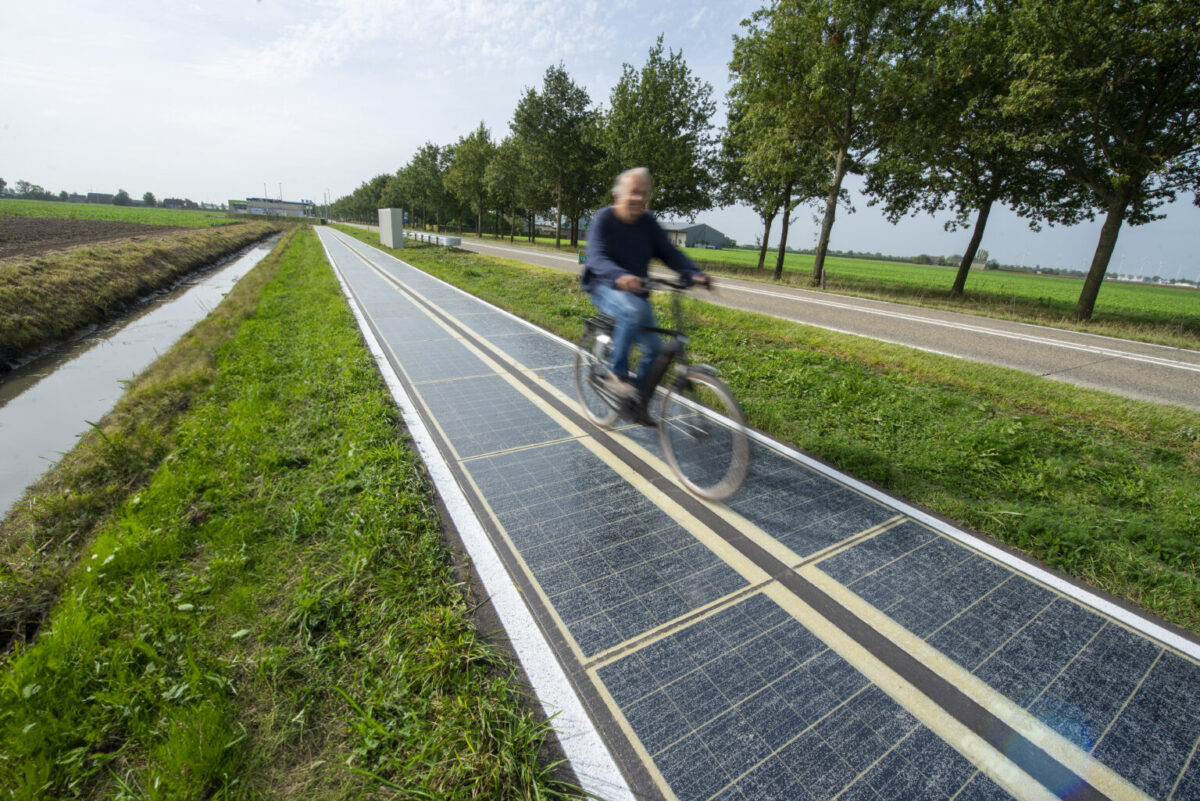France's Colas and Dutch construction contractor BAM Royal Group have commissioned two cycle paths equipped with photovoltaic modules in the Netherlands.
The bike paths each span 1,000 square meters in the provinces of North Brabant and North Holland.
The PV module tech offers an efficiency of 21% per square meter. The solar cells are protected by a multilayer of resin and the electrical architecture has been designed to reduce the amount of wiring.
The two cycle paths will produce 160 MWh/year of renewable energy during the first year. The two projects are part of an initiative launched in 2018 by Rijkswaterstaat, which is part of the Dutch Ministry of Infrastructure and the Environment.
Solar roads in the Netherlands are not an unfamiliar concept. In 2016, a bike path near Amsterdam was equipped with solar panels and another one was built in 2020 in Utrecht. However, the feasibility and economic viability of solar roads remain controversial.
The Dutch government is also developing “Zon op Infra,” a plan to test the viability of solar power production on road infrastructure. The plan includes the deployment of solar installations along highways and on noise barriers.
The Dutch authorities are struggling to identify surfaces on which to deploy large-scale PV plants due to the scarcity of land. In recent years, research institutes and private companies have tried to prove the feasibility of solar projects on non-agricultural land, including dikes, rooftops, onshore and offshore water surfaces.
This content is protected by copyright and may not be reused. If you want to cooperate with us and would like to reuse some of our content, please contact: editors@pv-magazine.com.




That’s real innovation.. Would like to hear about more such innovations..
An efficiency of 21% per square meter hs no scientific meaning, but apart that, I look forward to see what will happens in any day in which you will have free zing temperatures… there is nothing I can think of more slippery than a surface like that with ice…



The scientific meaning of 21% efficiency is that rhe panel will convert 21% of the sun’s energy into electricity. The amount of energy the Sun provides to earth varies slightly due, but is standardized in the Solar Constant at 1370 watts per square meter. This is the power available at the top of the atmosphere, and the amount reaching the surface based on atmospheric conditions. In addition to being scientifically valid, the conversion rate is pretty much the scorecard by which the PV industry grades the quality of their PV technology.
Nooo we said porous and solar and a bike path, but I guess it’s fine. Looks a very fancy matte, maybe there will be porous fine art come-ons where they don’t leave the pedway unworked for 30 years at a go. Moss Dutch Masters retakes under the scrim.
Funny enough, as Alfredo pointed out, an “efficiency of 21% per square meter” is the same as 21% per square foot, 21% per square centimeter, 21% per Christmas cookie cutter shape, and 21% period. I wonder what actual specification this was garbled from.
At that low level, what happens when winter mud turns into summer dust? Most panels, are high above or angled for a reason. Even the ones in water benefit from a lack of dust or dirt hindering the conversion of solar rays into electricity.
Look up solar freaking roadways. Anywhere but under vehicular traffic. Plenty of space over carparks bike sheds….. They keep trying roads and pavements and it keeps breaking. Any coating is bound to reduce theoretical efficiency.
Seem like a VERY inefficient use of resources. More of a feel-good exercise to make the politicians seem they are doing something. How much energy can this possibly deliver compared to the cost to install, maintain, replace, etc?
No way this is a net positive.
Could be an energy saving hero, but it’s an environmental disaster because sooo many small particles from that surface will be scratched and thrown into the environment. Imagine a plastic road, and people drive bikes, dogs, children play there, teenagers smash their skates… and you grow your carrots next to it and you eat all those microplastics.
What is the average cost per width mile?
Sometimes, I sit back and envy what the Netherlands is doing in terms of sustainability. Taking advantage of one free resource while innovating.